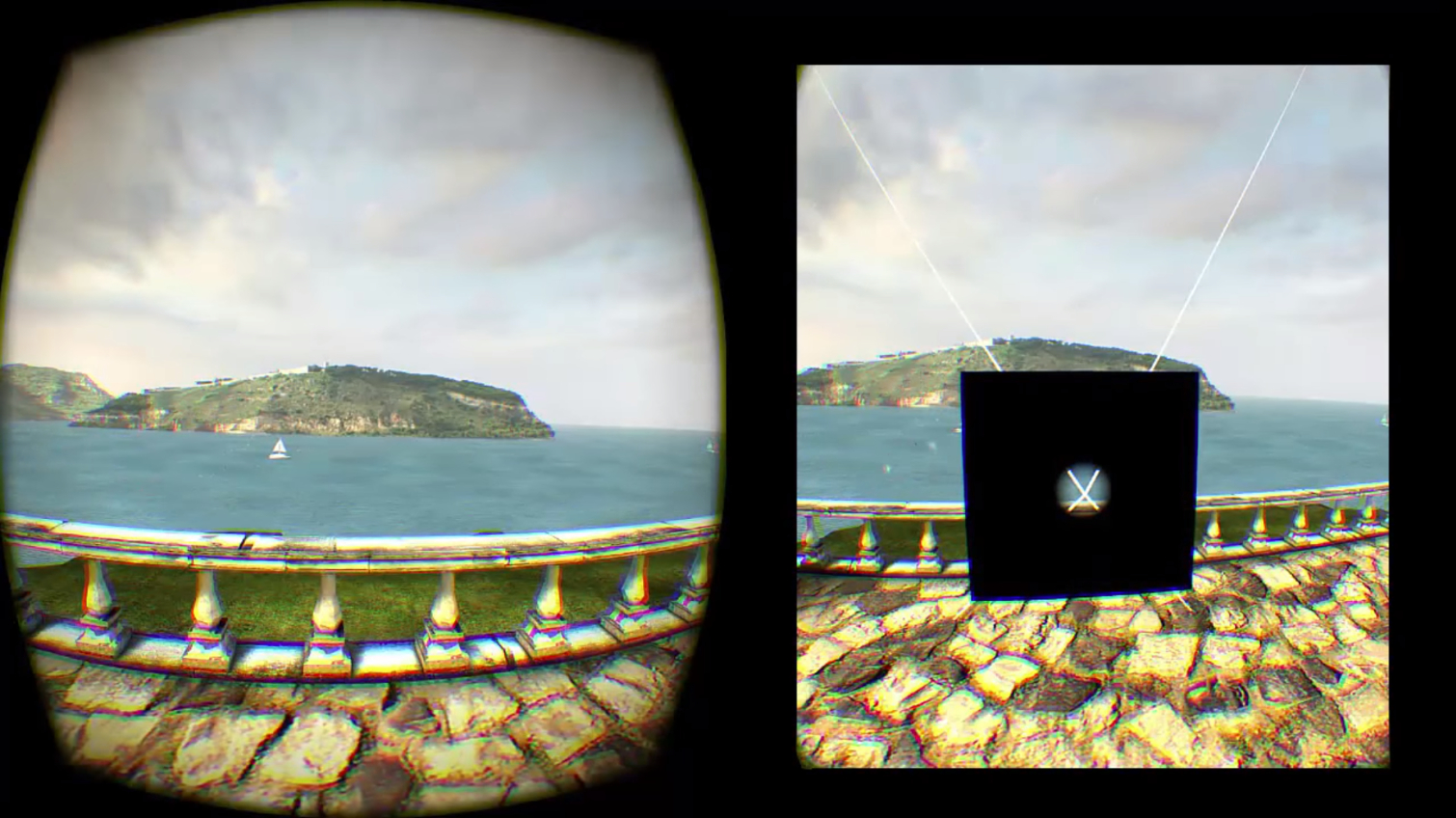Columbia University Research On VR Sickness Prevention, Dynamic FOV Modification Showing Promise
Columbia University Engineering released a video describing research that shows promise in reducing VR sickness when moving around a virtual environment with an input device.
The researchers--joy Fernandes and Steven Feiner at Columbia University Engineering’s Computer Graphics and User Interfaces Lab--found that dynamically limiting the user’s field of view increased the average comfort levels of participants.
VR sickness, also known as Simulation Sickness, describes the feeling of discomfort that comes over you when you experience something unnatural feeling in virtual reality. Sometimes it manifests as dizziness, some people get nauseous, and sometimes you just start to sweat. In either case, these symptoms are not fun and can leave you with a negative impression of VR and potentially an aversion to trying the experience again.
These reactions are most often triggered when a movement in VR doesn’t match your movement in real life. That is precisely why head tracking helped reduce potential motion sickness. The HTC Vive takes that to the next level by tracking your movement within a given area, but other VR HMDs will leave you seated, so the potential for VR sickness remains.
Fernandes and Feiner ran an experiment with 30 volunteers that tested the effects of “scaling a variable transparency polygon inserted in front of each of the users eyes.” The two researchers call these transparency polygons field of view (FOV) restrictors.
“Our data suggests that by strategically and automatically manipulating FOV during a VR session, we can reduce the degree of VR sickness perceived by participants and help them adapt to VR, without decreasing their subjective level of presence, and minimizing their awareness of the intervention,” said Fernandes and Feiner.
Fernandes and Feiner spread the test over two days and split the volunteers into two groups. On day one, 15 people were shown a demo without adding FOV restrictors, and 15 people did the same test with dynamic FOV restrictors enabled. On day two, the groups ran the opposite tests. During each session, participants were asked to rate their level of discomfort from one to 10. Fernandes and Feiner's results suggest that the test demo was more comfortable for subjects when the FOV restrictors were in use. The data also suggested that most people don't notice the reduction happening. The two researchers noted that participants who did actually notice the FOV restrictors preferred them.
Get Tom's Hardware's best news and in-depth reviews, straight to your inbox.
Fernandes and Feiner presented their findings at the IEEE 3DUI 2016 conference, which took place in March, where they received the IEEE 3DUI 2016 Best Paper Award for their work. You can find the full paper on the IEEE Xplore website, but you will have to pay for access. (The IEEE charges non-members $33, members receive a $20 discount.)
First person shooters are often the most popular games. Many people are hoping that franchises such as Call of Duty will make their way to the medium in the future. Findings such as the results that Fernandes and Feiner's study revealed show promise for a future where that could be possible without causing VR sickness for most people.
Follow Kevin Carbotte @pumcypuhoy. Follow us on Facebook, Google+, RSS, Twitter and YouTube.
Kevin Carbotte is a contributing writer for Tom's Hardware who primarily covers VR and AR hardware. He has been writing for us for more than four years.
-
turkey3_scratch I'm confused with what it means by "limiting the field of view". Are we talking about depth or what?Reply -
InvalidError Reply
You are thinking of viewing distance. The 'field of view' refers to how wide and tall the visible area is.18127054 said:I'm confused with what it means by "limiting the field of view". Are we talking about depth or what?
They mask the edges with a scaled black alpha gradient to reduce the amount of visible stuff in the peripheral vision. -
Jeff Fx I wonder if this will help with high-speed games. I can handle navigating a virtual room with a controller, though room-scale is more comfortable, but I can only spend a few minutes in Project Cars before I need a break.Reply -
alidan fov is an issue at all times, hell, even in non vr i get sick with constrained fovReply
however through this i learned that if i power through a game that's making me sick for a few hours, it stops effecting me in that game.
with current games, i just turn them off and don't bother, but with vr, i would find the will to do that again depending on the game. -
targetdrone Is simulation sickness somehow different from motion sickness which is cause when visual information sent to the brain doesn't match up stabilization information sent by the inner ear.Reply -
alidan Reply18127624 said:Is simulation sickness somehow different from motion sickness which is cause when visual information sent to the brain doesn't match up stabilization information sent by the inner ear.
different name for largely the same thing.
mostly the difference comes from how its triggered.
boats are a great example, you are on a solid surface but your brain doesn't understand the signals.
for me its a non issue, but have the fov to low or to high and i cant make it 15 minutes. -
kcarbotte Reply18127054 said:I'm confused with what it means by "limiting the field of view". Are we talking about depth or what?
The video demonstrates what they mean. Basically, they place a black ring around that view and shrink it down while moving. It's hard to put into words, but the video makes it clear as day.
-
turkey3_scratch Reply18133101 said:I haven't played my Rift in over a month, even Lucky's Tale made me sick.
I'll take it :D

